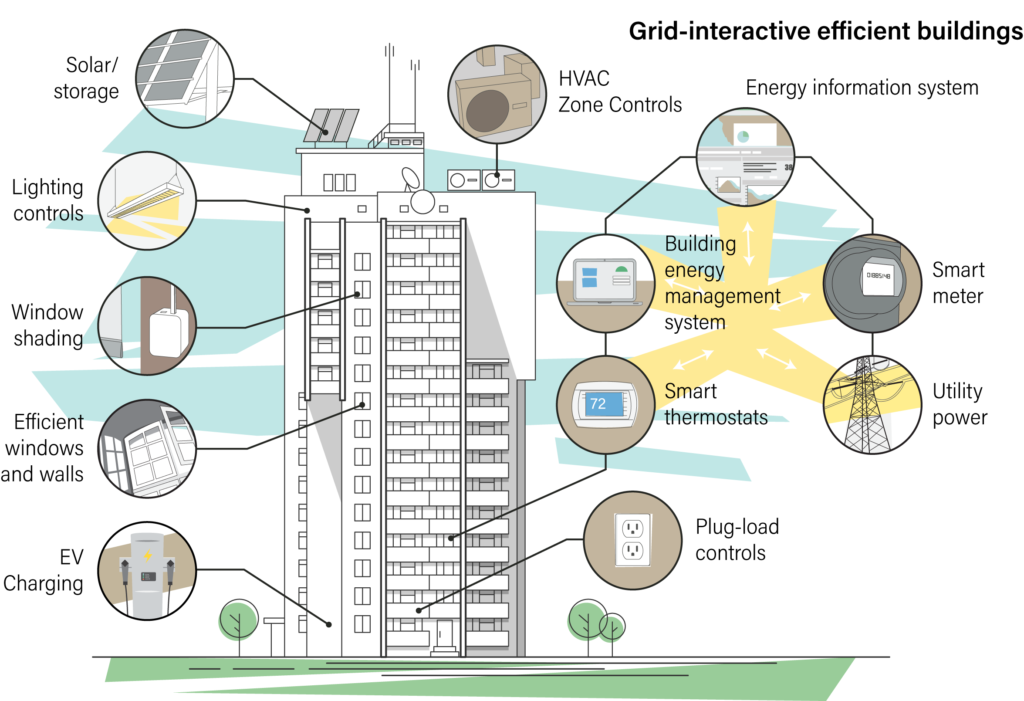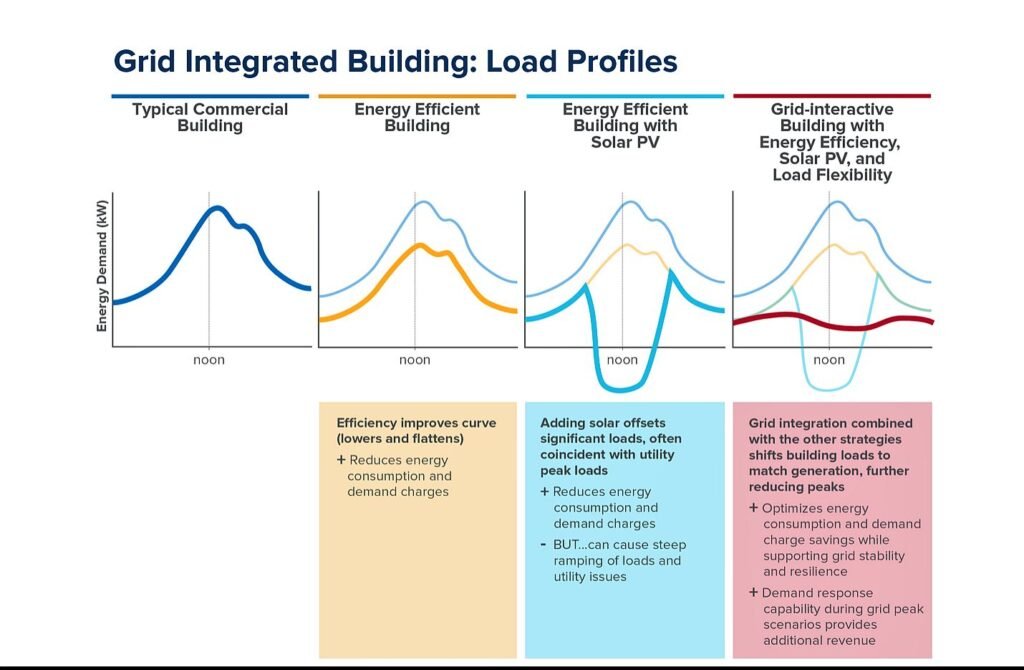The White House on May 17 announced a slate of new programs aimed at integrating US buildings into the clean energy economy. Alongside the plans for job training and building electrification, the announcement also highlighted the Biden administration’s goals for grid-interactive efficient buildings — a less well-known approach that has significant potential to reduce carbon emissions.

What are these grid-interactive efficient buildings and why they feature so prominently in plans for a clean energy future?
A grid-interactive efficient building (GEB) continuously optimizes energy use by combining efficiency measures such as LED lighting, efficient heat pumps, and high-performance windows with smart technologies such as solar, battery storage, and integrated building controls.
GEB interacts with the grid to continuously manage its demand in response to key signals from the electric utility.

To save money, reduce strain on the grid, or limit carbon emissions from electricity generation, a GEB might shed load (e.g., automatically dimming LED lights throughout the building) or shift its load from one time to another (e.g., drawing from on-site batteries rather than the grid) in a practice known as demand flexibility, or load flexibility.
A new GEB roadmap from the US Department of Energy’s Building Technologies Office (BTO) estimates that smarter, more efficient buildings can eliminate 80 million tons of CO2 emissions annually by 2030, reducing the emissions of the entire US power sector by 6 percent.

The emissions savings from GEBs would be equivalent to retiring more than 50 midsize coal plants or taking 17 million cars off the road.
By integrating energy efficiency, distributed energy generation technologies, and demand flexibility into its buildings, the US General Services Administration (GSA), the nation’s largest landlord, with nearly 10,000 buildings and more than 375 million square feet of real estate under its control can help to advance the state of the art in grid-interactive efficient buildings.
Reference- The White House Press Briefing, GSA website, NREL website, Clean Technica, Futurism






